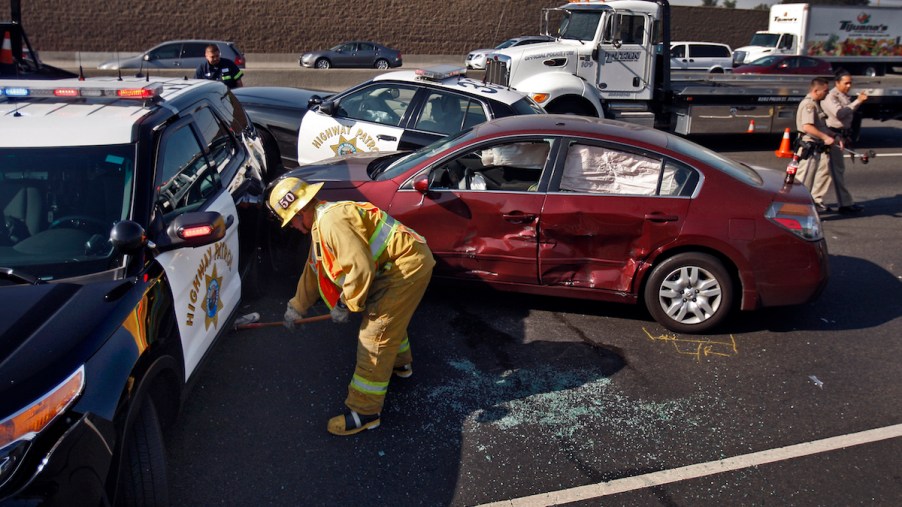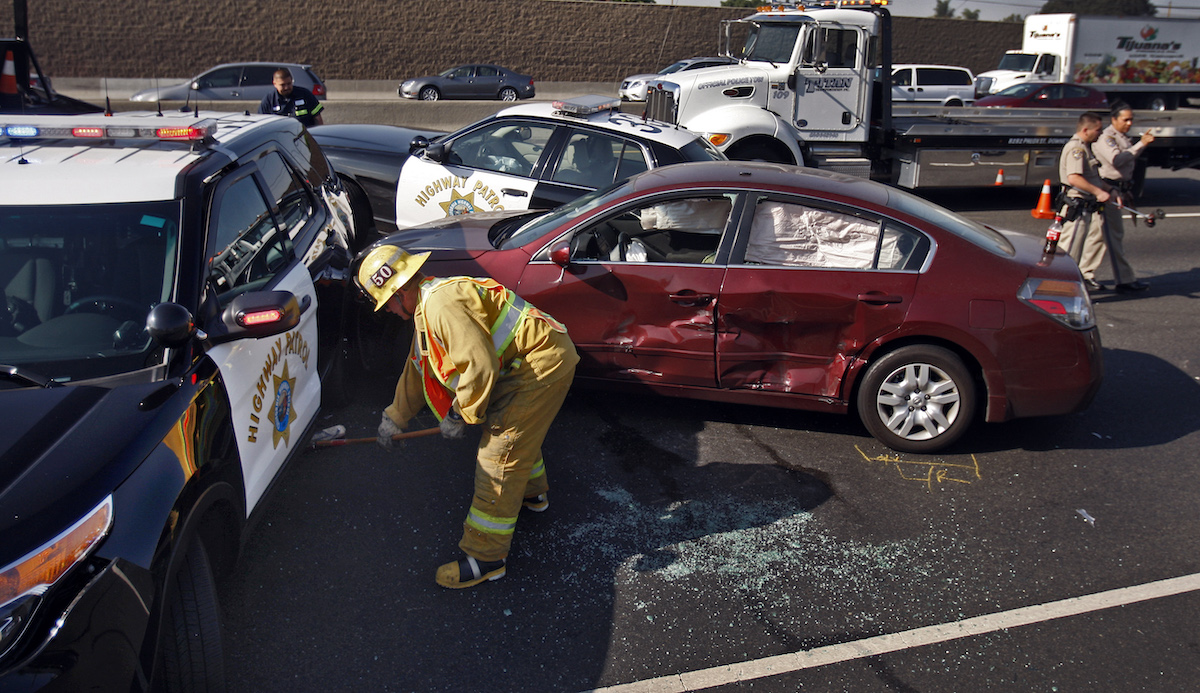
When Should the PIT Maneuver Be Used, and Is It Safe?
You’re probably accustomed to seeing the PIT maneuver in films and on television. The Fast & Furious franchise depends on the dramatic, scene-stealing destruction that the maneuver can create. Movies and TV aside, the PIT isn’t used often in everyday car pursuits. However, it garners many views when real-life footage goes public.
The Washington Post reports that, since 2016, police PIT maneuvers have resulted in 30 deaths. However, they are a legal form of force, but many conditions must be in place before officers can legally deploy such a risky move.
Video footage of police using the PIT maneuver is frightening
Law enforcement officers use PIT maneuvers to actively end vehicle pursuits. If a suspect does not pull over, officers are sometimes given the option to force the fleeing vehicle into a 180-degree turn. The U.S. Department of Justice confirms that a PIT maneuver will force the suspect’s vehicle to “stall and stop.”
The videos that appear on the news and on social media, many from law enforcement dashcam footage, show cars forced into turns beyond 180 degrees. Vehicles have flipped. Others have T-boned with law enforcement vehicles, resulting in harm to both officers and suspects.
PIT maneuver standards have not changed in decades, but cars have changed

“PIT” is short for “precision immobilization technique.” The “precision” part was coined when the technique was developed in the 1980s. At the time, officers were trained to use their vehicles to apply side pressure to the rear quarter panel of a suspect’s car. The result would be a “predicted” spinout.
As video footage has shown, many of these spins do not appear to be predictable. The Federal Law Enforcement Training Center’s Applied Research Branch investigated why the PIT maneuver isn’t entirely predictable. What the center found is that standards and training used in 1980 are not effective or predictable when used on vehicles with electronic stability control.
What is electronic stability control, and how does it interfere with the PIT maneuver?
Electronic stability control, or ESC, has been a vehicle option since 1988 but was mandated in 2012 for all new automobiles sold in the United States. The purpose of ESC is to prevent rollovers by stabilizing a vehicle that swerves or is hit by sudden impact.
Vehicles equipped with ESC help drivers by automatically preventing under- or oversteering. Think about when you drive on an icy road. You might overcorrect and spin out. ESC prevents that from happening or makes it more difficult to spin out. Now, think about the PIT maneuver. The officers deploying the technique are purposely attempting to hit a vehicle from behind, causing it to spin out at 180 degrees and stall. But ESC technology works against the technique.
Further, technology is not predictable. Different auto manufacturers place different ESC systems in their vehicles, and there is no one way to engineer an ESC system. Now, throw in other factors, such as vehicle size, drivetrains, and differentials, and you can start to imagine the problem. There really is no way to know for certain how a suspect’s vehicle will respond to a PIT maneuver.
Training and regulations also come into play
The PIT maneuver is sometimes referred to as a “pursuit intervention technique.” This removes the problem of “precision” and is a bit more straightforward. A flipped vehicle is one that has been interfered with, after all.
Lack of agreement regarding what “PIT” actually stands for is only a minor part of the problem. Senior Leadership Program research from the Florida Department of Law Enforcement looks at guidelines used by various law enforcement agencies across the Southern United States and finds many outcomes.
Some of those rules have to do with officer training on the PIT maneuver, the type of suspect being pursued, road conditions, and traffic density. But agencies can’t seem to agree whether the PIT maneuver is a form of deadly use of force. This distinction makes it difficult to determine the appropriate charges when an officer misuses or misapplies the technique.
It is clear to some agencies that solid training, clear regulations, supervisor authorization, and police oversight can help prevent excessive use of force. However, many law enforcement agencies have discontinued the PIT maneuver because of its outdated methods and unreliability.


